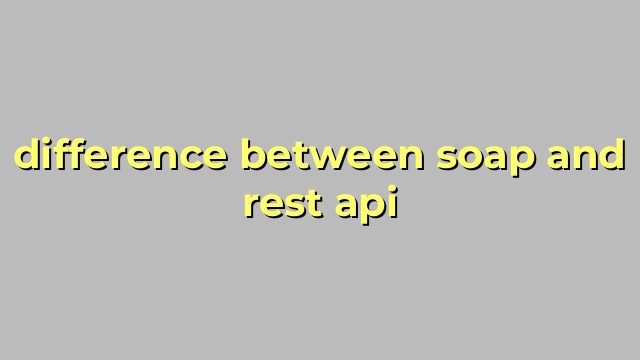Difference between SOAP and REST API
When it comes to building web services, there are two main approaches: Simple Object Access Protocol (SOAP) and Representational State Transfer (REST) Application Programming Interface (API). Both of these technologies are popular and are used extensively for building web services. Here are some of the key differences between SOAP and REST API:
1. Structure
SOAP is an XML-based protocol for accessing web services. It uses XML to define the structure of the messages that are sent between the client and the server. REST, on the other hand, is a lightweight protocol that uses HTTP for communication. REST is often referred to as “RESTful” because it follows the principles of REST.
2. Communication
SOAP uses XML to send messages over a network, whereas REST uses JSON or XML. SOAP follows a more rigid approach for communication, which can be beneficial in some cases. REST, on the other hand, is more flexible and allows for more efficient communication.
3. Security
SOAP supports a range of security protocols, including SSL, WS-Security, and more. REST, on the other hand, relies on the security features provided by HTTP, such as HTTPS and OAuth.
4. Performance
SOAP is a heavy protocol that can be slower than REST. REST, being lightweight, is faster and more efficient. This makes it an ideal choice for mobile applications and other scenarios where bandwidth is limited.
5. Implementation
SOAP is complex to implement, and it requires a lot of tools and libraries to build a web service. REST, being simple, is easy to implement, and it requires minimal resources to get started.
In conclusion, both SOAP and REST API have their own advantages and disadvantages. The choice between the two depends on the specific requirements of the web service being developed. While SOAP may be suitable for large organizations that require a rigid and secure communication protocol, REST is a better choice for mobile applications and lightweight web services.
Table difference between soap and rest api
| Criteria | SOAP API | REST API |
|---|---|---|
| Acronym | Simple Object Access Protocol | Representational State Transfer |
| Protocol Type | XML-based messaging protocol | HTTP-based web service |
| Message Format | XML format (can use JSON) | JSON or any other format |
| State Management | Stateful | Stateless |
| Operations | Read, write, update, delete (CRUD) | HTTP methods (GET, POST, PUT, DELETE) |
| Security | WS-Security and SSL/TLS | HTTPS and SSL/TLS |
| Caching | Less caching support | Better caching support |
| Scalability | Allows for more scalability | Less scalable due to statelessness |
| Language Support | Supports many programming languages | Supports fewer programming languages |

